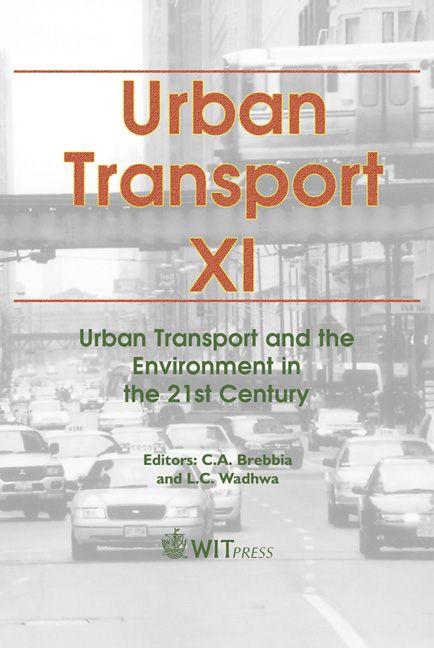TEE2003: Transport Energy & Environment: An Advanced Software Tool For The Estimation Of Direct Impacts From Transport
Price
Free (open access)
Transaction
Volume
77
Pages
10
Published
2005
Size
486 kb
Paper DOI
10.2495/UT050441
Copyright
WIT Press
Author(s)
A. Agostini, M. Lelli, E. Negrenti & A. Parenti
Abstract
TEE (Transport Energy and Environment) is flexible software for the estimation of direct impacts (pollutant & noise emissions, accident occurrence) from transport, developed by ENEA and ASTRAN srl. The new version of the TEE model (TEE2003) has been developed with many features allowing the user to better analyse transport related impacts, taking into account: vehicle kinematics, cold emission distribution, parking process, emissions of new categories of pollutants, noise emissions and accident occurrence. As regards the kinematics, TEE code can calculate link emissions starting from standard correlations based on average speed or from instantaneous emissions data. This flexibility allows detailed emissions calculations, according to the traffic input data available, either from measurements or from traffic models. As it concerns the estimation of the effects of cold emissions, spatial and temporal distributions, TEE offers alternative solutions for the user, according to the more or less disaggregated information, allowing one in any case to distinguish different situations (e.g. morning traffic in residential areas or evening traffic in city centres where cold vehicles represent a majority). The parking process algorithm provides an approximated but meaningful treatment of traffic flows from and to parking areas allowing the location of cold vehicle emissions in space and time and a greater accuracy in the estimation of evaporative emissions distribution. The pollutants added within the TEE2003 version are N2O, Benzene, PM10, Aromatics, Benzo-(A)-pyrene, PAH, Dioxins and Furans. Two new models have been inserted: the noise emission model, and the accident occurrence model. The first model is sensitive to vehicle speed and heavy-duty vehicle presence. The accident model calculates the total number of accidents involving only vehicles or vehicles and pedestrians. Furthermore, a new routine for calculating the effect of the electric load (air conditioning, lights and other devices) has been inserted.
Keywords





